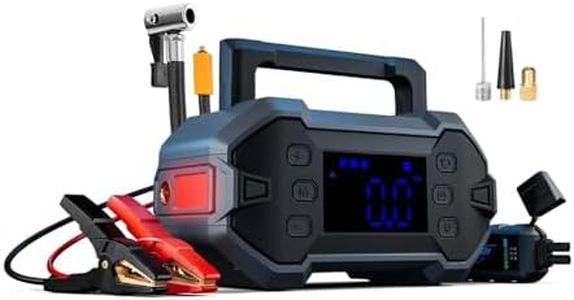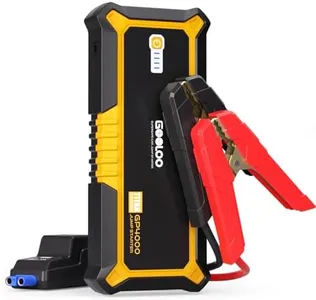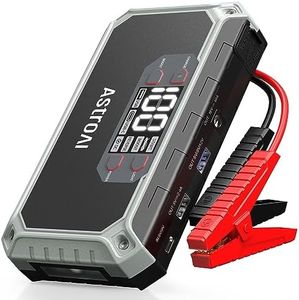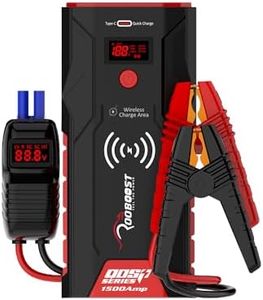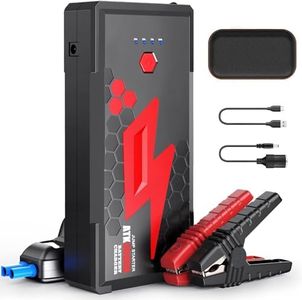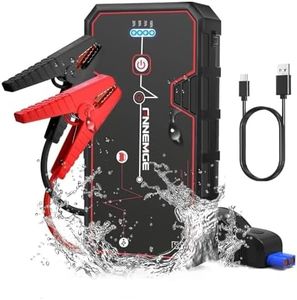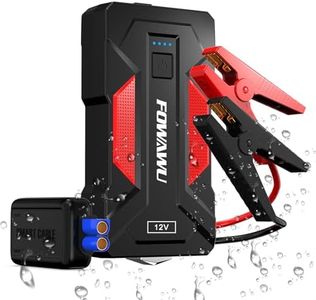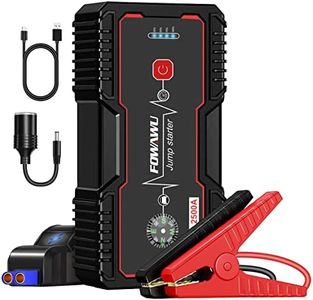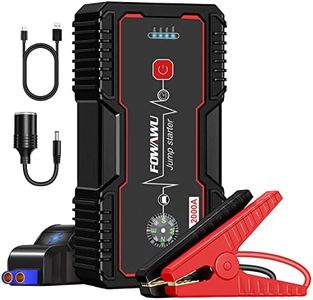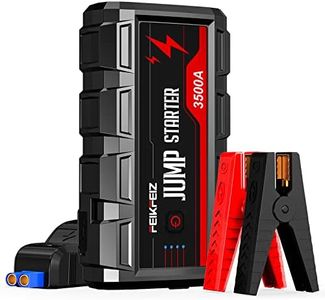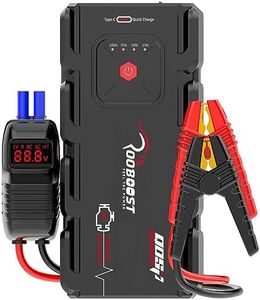We Use CookiesWe use cookies to enhance the security, performance,
functionality and for analytical and promotional activities. By continuing to browse this site you
are agreeing to our privacy policy
10 Best Super Capacitor Jump Starter
From leading brands and best sellers available on the web.Buying Guide for the Best Super Capacitor Jump Starter
Choosing a super-capacitor jump starter can feel confusing with all the options out there, but once you know what matters, picking the right one gets much easier. A super-capacitor jump starter uses stored electrical energy to jump start a vehicle, and it stands apart from regular battery jump starters with its quick charging and long lifespan. To buy the best one for your needs, it's important to understand a few key specifications that can make a big difference in reliability, convenience, and safety for you.Peak Current OutputPeak current output indicates the maximum surge of electrical current the jump starter can deliver when starting your engine. This is crucial because your car's engine needs a certain amount of current to crank and start, especially in colder weather or with bigger engines. Smaller vehicles like motorcycles or compact cars can be started with lower peak current (around 300-500A), while larger vehicles like SUVs and trucks may require 800A or more. Consider what type of vehicle you'll be using the starter on most often, and make sure to pick a peak current suitable for your engine size.
Super-capacitor Type and QualitySuper-capacitors store and release energy differently compared to batteries. Their quality influences charging speed, reliability, and lifespan. High-quality super-capacitors can handle more charge-discharge cycles and offer faster, more stable boosts. Quality varies, so look for jump starters with reputable capacitor components, as these will give you more dependable long-term performance, especially if you plan to use the device frequently or in tough conditions.
Pre-charging OptionsSuper-capacitor jump starters usually need a quick pre-charge from a weak vehicle battery or another power supply before they can deliver a jump start. Check if the unit offers multiple ways to pre-charge, such as through a car's 12V socket, USB, or even a manual crank. More charging options mean more flexibility if the battery is very flat or the environment is challenging. Choose a model with convenient pre-charge methods that fit how and where you expect to use it.
Operating Temperature RangeThis specification tells you in what temperature extremes the jump starter will reliably work. Super-capacitors usually perform better than batteries in cold conditions, but check the operating range provided by the manufacturer. If you live in a place with harsh winters or hot summers, make sure your jump starter can manage in those temperatures, so you aren't left stranded when weather gets rough.
Size and WeightThe physical size and weight matter for portability and storage. Lighter, more compact models are easier to carry around and store in your glove box or trunk, but very small units may not provide enough power for larger vehicles. Think about where you’ll keep your jump starter and what you’ll be able to comfortably lift and use should the need arise.
Safety FeaturesGood safety features protect both you and your vehicle. Look for safety components like reverse polarity protection, spark-proof connections, and automatic shut-off. These help prevent accidents like sparks or incorrect hook-ups, making the jump starting process much safer even for those who have never used such a device before.
